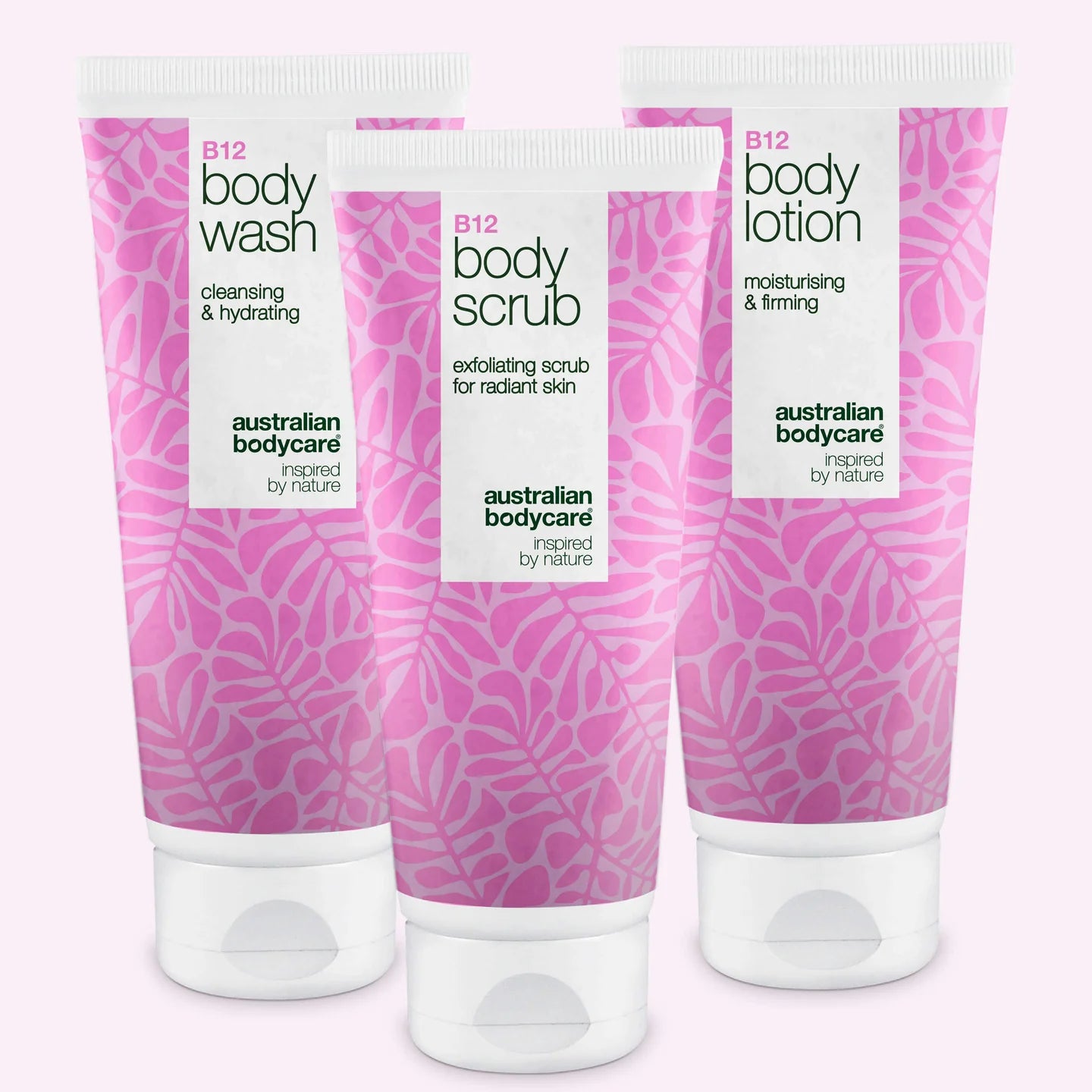Paronychia – good advice for treatment
Many people have experienced paronychia, which is an uncomfortable condition that can cause pain around the nail. Fortunately, there are good options for treatment and prevention - you can learn more about them here, as well as why nail root inflammation occurs at the root of the nail.
Table of contents
What is paronychia?
Inflammation of the nail root, also known as paronychia, is an inflammatory condition of the root of the nail. An inflamed nail root can be both acute and chronic.
In paronychia, the root of the nail becomes infected with a bacterium, which can affect both hands and feet. Inflammation of the nail is one of the most common bacterial infections of the hand. The damage occurs at the edge of the nail and is usually superficial. In the vast majority of cases, the damage occurs in the tissue and skin around the fingernail or toenail.
Acute paronychia
Acute nail root inflammation
Paronychia occurs because the skin barrier around the nail is broken. When this happens, the roots of the nail are exposed and vulnerable to bacterial attack. When paronychia occurs acutely, it is often due to an infection of bacteria attacking the damaged skin. The bacteria can penetrate even the smallest crack or break in the skin around the nails, so it doesn't take much to cause an infection.
Chronic paronychia
A chronic nail bed infection, unlike an acute one, does not develop suddenly. Instead, it develops more slowly over time - and swelling and soreness will increase over time. Often, chronic paronychia is associated with the fungus Candida, which often affects several fingers or toes at once.
Inflammation at the base of the nail should not be ignored, but treated when you notice the infection. Otherwise, it can lead to permanent damage and deformity of the nail plate.
What does Paronychia look like - and who gets it?
aronychia often appears as redness at the edge of the nail bed. If the nail bed is damaged, the nail may eventually start to develop white patches.
Inflammation of the nail bed can affect people of all ages - children, adolescents, adults and the elderly. However, women tend to suffer from paronychia more often than men.
Why do you get paronychia?
Paronychia can arise from a number of different causes. Common to all causes is that they cause damage to the nail bed. Damage to the nail bed means that the barrier between the nail and the surrounding skin is broken and becomes vulnerable to bacterial, fungal and micro-organism attacks, which then settles as an infection in the nail bed.
Nail biting and picking
One of the most common causes of paronychia is nail biting or picking. In these cases, the edge of the nail is particularly prone to breakage, opening the door for bacteria to enter the skin and cause inflammation.
Manicure or fake nails
If you have a manicure, pedicure or artificial nails, the risk of nail root inflammation is also higher. Often one of these causes is the reason why the edges of the nails become infected with bacteria. When you have your nails done, the nail technician works with your cuticles and edges, which can break the barrier between the nail and the edge, causing inflammation at the base of the nail.
Dry roots
Do you have dry nail roots? This could be the cause of nail root inflammation. Like all other skin on the body, dry cuticles and cuticle edges are particularly vulnerable. Dry skin breaks more easily than moisturised and healthy skin. This is why dry cuticles and roots often allow bacteria to enter the edges of the nails and leave them inflamed.
Ingrown nails
Ingrown nails are another common cause of nail roots becoming inflamed. Nail ingrowth is a condition on the feet - most commonly on the big toe - where the edges or corners of the nails grow into the soft tissue of the toe, called nail folds. This often leaves the nail roots irritated and inflamed.
Water and moisture
Water and humid environments can even cause paronychia. Working with your hands in water for much of the day or doing a lot of washing up can lead to nail bed inflammation. In the same way as dry nail beds, if the nail edges and the skin around the nails are constantly wet or moist, they become more vulnerable to breakage - and thus to bacteria entering and causing infection.
Symptoms of paronychia
How do you know if you are experiencing paronychia on your hands or feet? There are often some very clear symptoms that indicate that the nail bed is infected with a bacterium, fungus or micro-organisms. Therefore, there are some signs to look out for if you are unsure whether you have nail bed inflammation.
If you have paronychia, in the vast majority of cases, you will experience redness and swelling accompanied by pus formation in the nail bed. The skin on the side of the nail often swells up and becomes red and throbbing. The tenderness can be on one side of the nail or on both sides if the skin has been infected on both sides of the nail.
The most obvious symptoms of paronychia are:
- Redness
- Swelling
- Soreness/pain
- Pus
Treating Paronychia
Although paronychia is a common condition among girls and boys, women and men of all ages, it is fortunately also easily treatable and reversible. Treatment should be based on whether you have acute or chronic nail root inflammation.
Treatment of acute Paronychia
The best way to deal with acute paronychia is to keep the infected area clean. You can do this simply with soap and water. Make sure to wash the infected area with soap and water 3-4 times a day. You can use a soap with chlorhexidine to disinfect the area effectively.
Sometimes it may be necessary to supplement the treatment with antiseptics such as oils and ointments. You can find these over the counter at your nearest pharmacy.
To keep your hands and nails healthy and strong, we recommend that you wash your hands daily with Body wash containing natural Tea Tree Oil. In addition, you can use nail repair for your nails on a daily basis.
Treatment of chronic paronychia
In paronychia, it is important to minimise or avoid the environments that can cause the inflammation. Therefore, minimise the exposure of the nail roots to watery and moist environments. The inflamed area should be kept dry as much as possible to create the best conditions for healing.
If it is a mild case of chronic paronychia, you can treat it with disinfectant soap and antiseptics.
With the right treatment, you can get rid of the infection in 5-10 days.
When should you go to the doctor?
If the treatment has not helped within 14 days, or you are unsure whether there are other more serious conditions, it is important to see your doctor. He or she can examine the area, diagnose the condition and decide whether medication or other treatment is needed.
In a few cases, it may be necessary to make a small incision to allow the inflammation to drain. You should never attempt this yourself, but always leave it to a professional to handle. Otherwise, you risk making the pain worse.
Preventing Paronychia
When it comes to your nails and the skin around them, you can do a lot to prevent nail root inflammation or other problems:
Put the gloves on
If you work in a profession where your hands are often exposed to water, for example as a cleaner, hairdresser or dishwasher, get into the habit of wearing a pair of gloves so that your nails and surrounding skin are not constantly wet.
Cut your nails the right way
When you cut your nails, especially on your toes, it's important that you don't cut them too short or too far down the sides. Many people tend to cut their nails in a curved shape. Instead, you should actually cut the nail straight across so that you don't cut into the soft tissue on the sides of the nail. If you do this, they are more likely to dig into the skin, where they can cause inflammation.
Choose the right shoes
Make sure you wear the right footwear. If you wear shoes that are too small or too pointed, they will squeeze your toes and nails together. This creates a bad environment for your nails, which in the confined space press down into the nail beds and allow bacteria to enter.
Keep your nails healthy
The best way to keep paronychia at bay is to keep your nails healthy. You can do this by:
- Avoid pulling, biting and tugging. If you have a loose piece of nail, don't bite or pull it off. Instead, cut it so you don't pull off any living tissue.
- Leave your cuticles alone. Many people push and push back their cuticles with a fingernail or similar. If you can't live with your cuticles, use a rose stick to push them back into place.
- Moisturise your nails and cuticles. You can do this by using a good hand cream a few times a day. Make sure to massage the cream thoroughly into your nails and cuticles, and add a nail oil if they need a little extra moisturising.
- Dry your hands and feet thoroughly. After showering or washing your hands, it's important to dry your hands and feet thoroughly. Trapped moisture is a warm welcome for bacteria to multiply in the area around your nail beds.
- Wear gloves. Whether you're cleaning or washing dishes, it's a good idea to wear gloves to protect your hands from water.
- Use mild nail polish removers. If you're a frequent nail polish wearer, you probably also use nail polish remover frequently. Make sure to remove nail polish with a product without acetone. Acetone is very harsh on skin and nails, which easily dry out and become vulnerable to breakage and bacterial attack.
FAQ
What is Paronychia?
Paronychia is a condition that can affect nails on both hands and feet. There are chronic and acute forms of paronychia. Acute inflammation occurs suddenly and is often caused by damage to the skin barrier around the nail, which is infected with a bacterium. Chronic nail bed inflammation develops slowly and is often caused by an infection with Candida fungus.
Why do I get Paronychia?
If you tend to bite or pick at your nails and the surrounding skin, there is an increased risk of bacteria infecting the area and becoming infected. Other causes can be excessively dry or moist nail roots, if you work a lot with water or use drying products. In addition, improper footwear and nail clipping can cause the nail root to become inflamed.
What are the visible symptoms of Paronychia?
Paronychia often presents as swelling and redness on the side of the nail. It is often accompanied by tenderness and pain that worsens if the area is touched.
How do I treat Paronychia?
The best treatment for paronychia is to keep the inflamed area clean with soap and water several times a day. This can be supplemented with antiseptics. At the same time, it is important to minimise humid environments so that the skin around the nails is not constantly moist.
How do I prevent Paronychia?
To prevent nail fungus, make sure you wear gloves when working with water and dry your hands and feet well after bathing. Find footwear that doesn't pinch your toes and make sure you don't cut your nails too short or too far down the sides.





